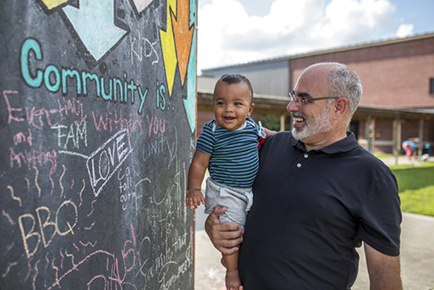General Information on Creative Placemaking
- National Endowment for the Arts
- Project for Public Spaces
- DIY
- Springboard for the Arts
- ArtPlace
- American Planning Association
- The Trust for Public Land
Public Art
Public art is exactly that, art in public spaces. The term “public art” may conjure images of historic bronze statues of a soldier on horseback in a park. Today, public art can take a wide range of forms, sizes, and scales—and can be temporary or permanent. Public art can include murals, sculpture, memorials, integrated architectural or landscape architectural work, community art, digital new media, and even performances and festivals.
Public art is often site-specific, meaning it is created in response to the place and community in which it resides. It often interprets the history of the place, its people, and perhaps addresses a social or environmental issue. The work may be created in collaboration with the community, reflecting the ideas and values of those for whom it’s created.
Being public, the art is free and accessible to everyone. Public art creates a heightened awareness in the viewer of the site of the people and the broader context of what’s around them. Today, viewers may capture a photo of the public art on their smartphone and share the work and the experience with others, extending the reach of public art beyond the site.
Whatever the form, public art instills meaning—a greater sense of identity and understandings of where we live, work, and visit—creating memorable experiences for all. (Americans for the Arts)
General Information on Public Art
- Project for Public Spaces
- Americans for the Arts
- Public Art and Creative Placemaking Toolkit
- Public Art Online
- Historic Preservation Considerations for Murals
- GCA Public Art Checklist
Examples of Public Art Projects
Artist Registries
Information for Public Art Administrators
Information for Artists Working in the Public Realm
